Affiliate disclosure: This post may contain affiliate links. Please see our Privacy Policy.
Evening primrose (Oenothera biennis) is a common edible wildflower that’s popular with foragers, since it’s edible tip to root. The roots and leaves are available in early spring, the edible flowers bloom all summer long, and the seeds can be harvested in autumn and winter.
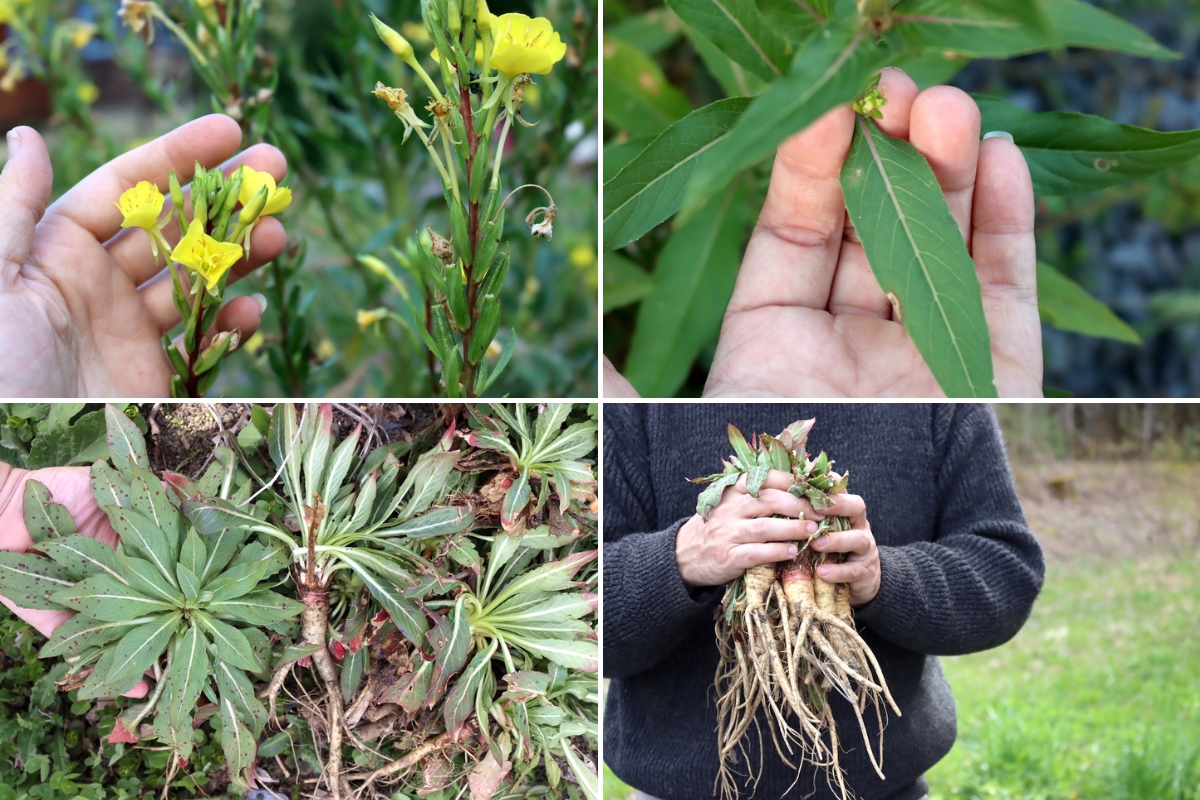
Table of Contents
- What is Evening Primrose?
- Is Evening Primrose Edible?
- Evening Primrose Medicinal Benefits
- Where to Find Evening Primrose
- When to Find Evening Primrose
- Identifying Evening Primrose
- Evening Primrose Leaves
- Evening Primrose Stems
- Evening Primrose Flowers
- Evening Primrose Roots
- Evening Primrose Seeds
- Evening Primrose Look-Alikes
- Ways to Use Evening Primrose
- Edible Wild Weeds
- Foraging Guides
Evening primrose is a common wild weed here in Vermont, and it grows with abandon just about anywhere that escapes mowing for more than a few months. Roadsides, yard edges, old fields, and even the edges and back corners of lawns on suburban lots. It doesn’t much mind poor soil, and will readily grow in sand or clay.
I’ve known for years that its an edible flower, and it has edible seeds that are pressed for evening primrose oil (a common health supplement). I didn’t, however, know that it has a large edible taproot and the potential to be an important early spring food source.
This past winter, I read about harvesting and cooking evening primrose roots in Sam Thayer’s book, The Forager’s Harvest, and I was out in the yard hunting for evening primrose rosettes as soon as the snow melted.
The plants are biennials, and they grow into a low basal rosette in their first year, stocking away energy into a thick tap root. In the second year, they use all those stored calories to send up a tall flower stalk.
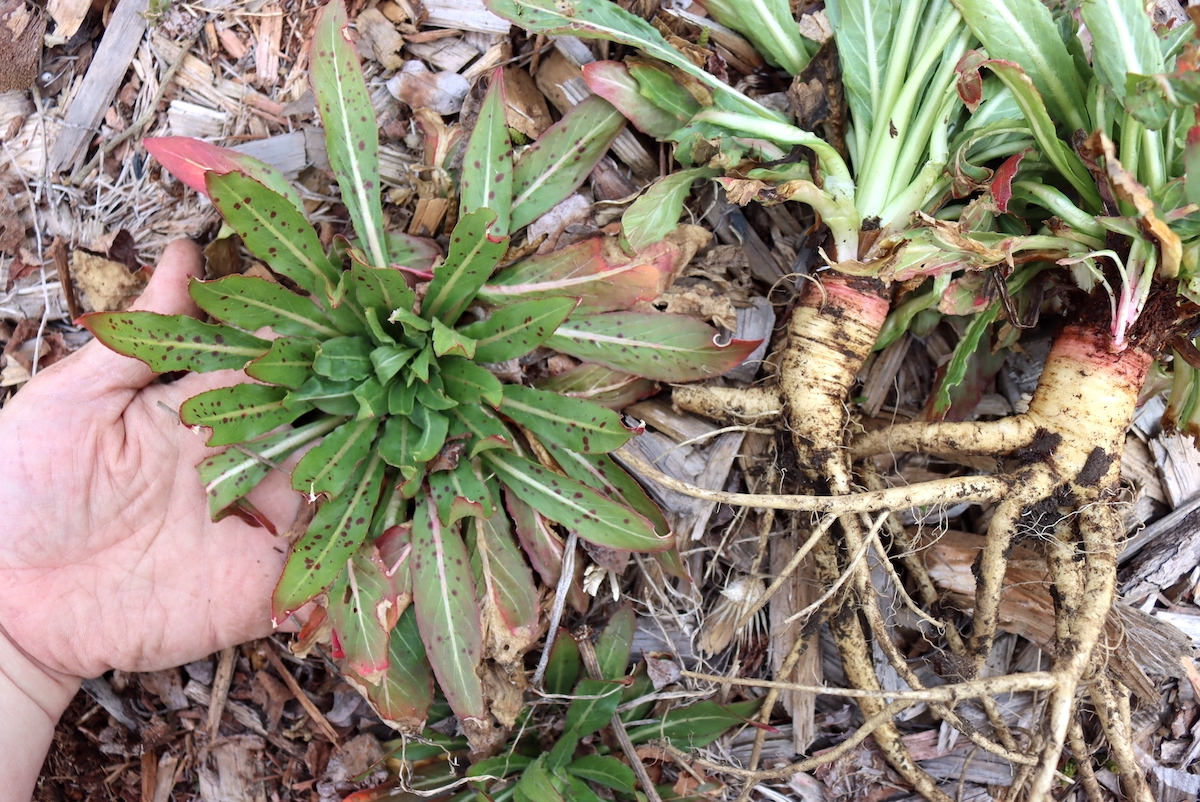
If you harvest the roots in the early spring of their second year (or late fall of the first year), the roots are still sweet and nutritious before it’s begun sending up a flower shoot.
Since they leaf in very early in the spring, months before most other things, they have the potential to provide calories during that all-important “hunger gap” when you’re out of root-cellared crops from the previous year, but the spring greens aren’t in yet.
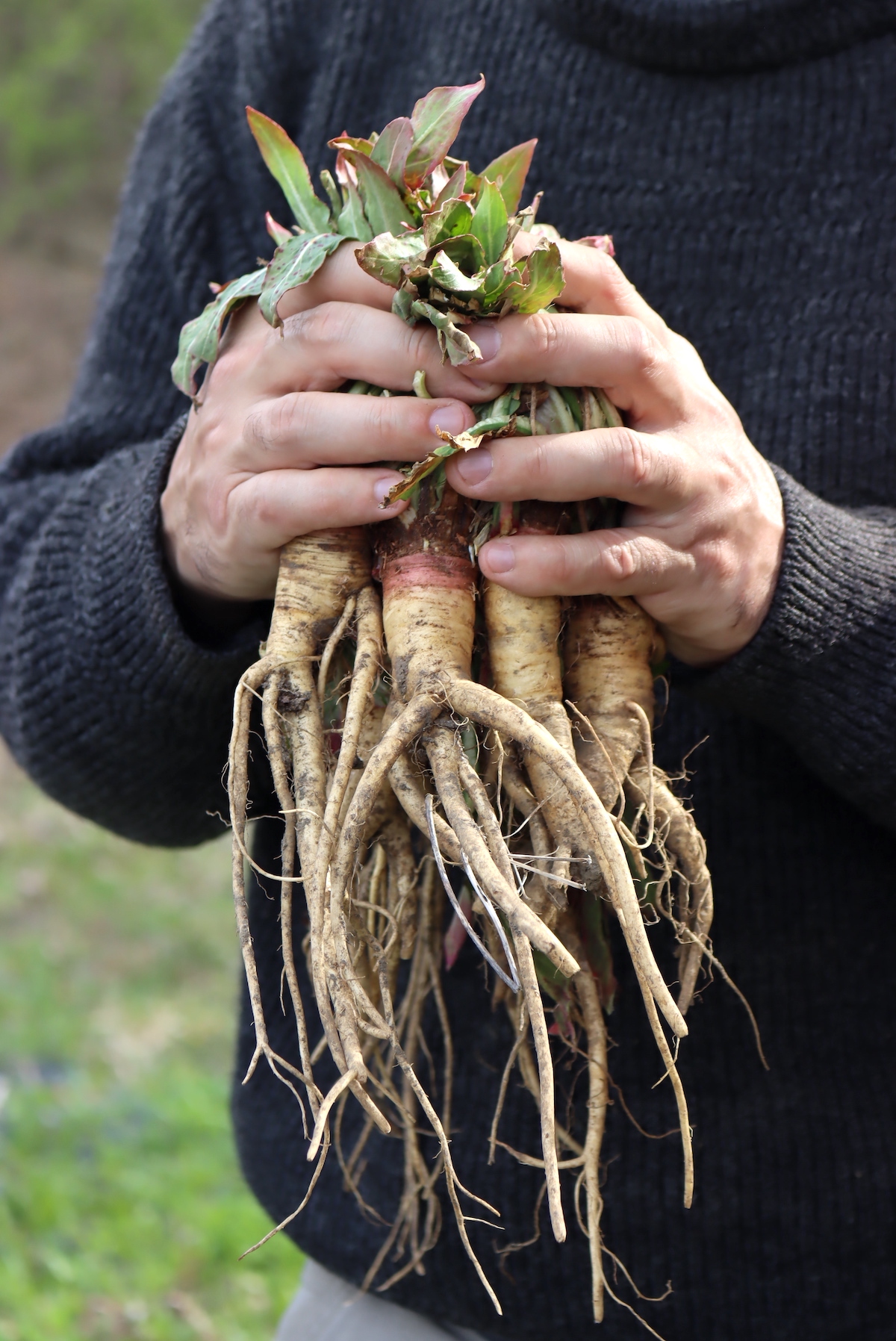
What is Evening Primrose?
Evening Primrose (Oenothera biennis) is an herbaceous biennial plant. It’s known by many common names, including Weedy Evening Primrose, Evening Star, Sundrop, German Rampion, Hog Weed, King’s Cure-All, and Fever Plant.
It’s native to eastern and central North America and has naturalized widely in other temperate and subtropical regions.
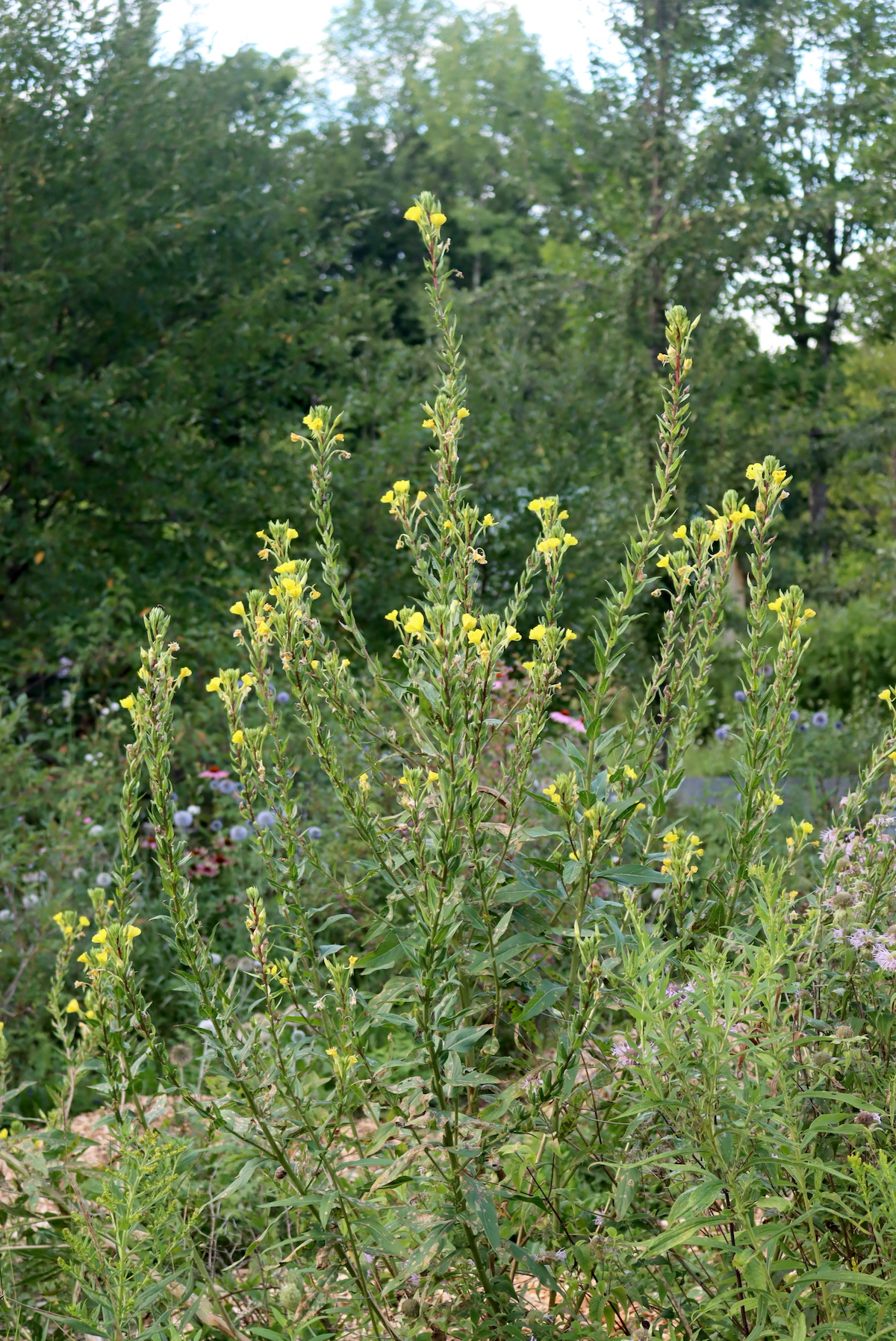
Is Evening Primrose Edible?
Evening Primrose is edible and is also used medicinally, both internally and externally. You can eat the leaves, stalk, flowers, seeds, and taproot of the plant, but because Evening Primrose is a biennial, different parts of the plant are tastier in different years of the plant’s life.
Evening Primrose taproots are best when harvested in the plant’s first year. Past the early spring in the plant’s second year, the roots become too tough and spicy to be palatable.
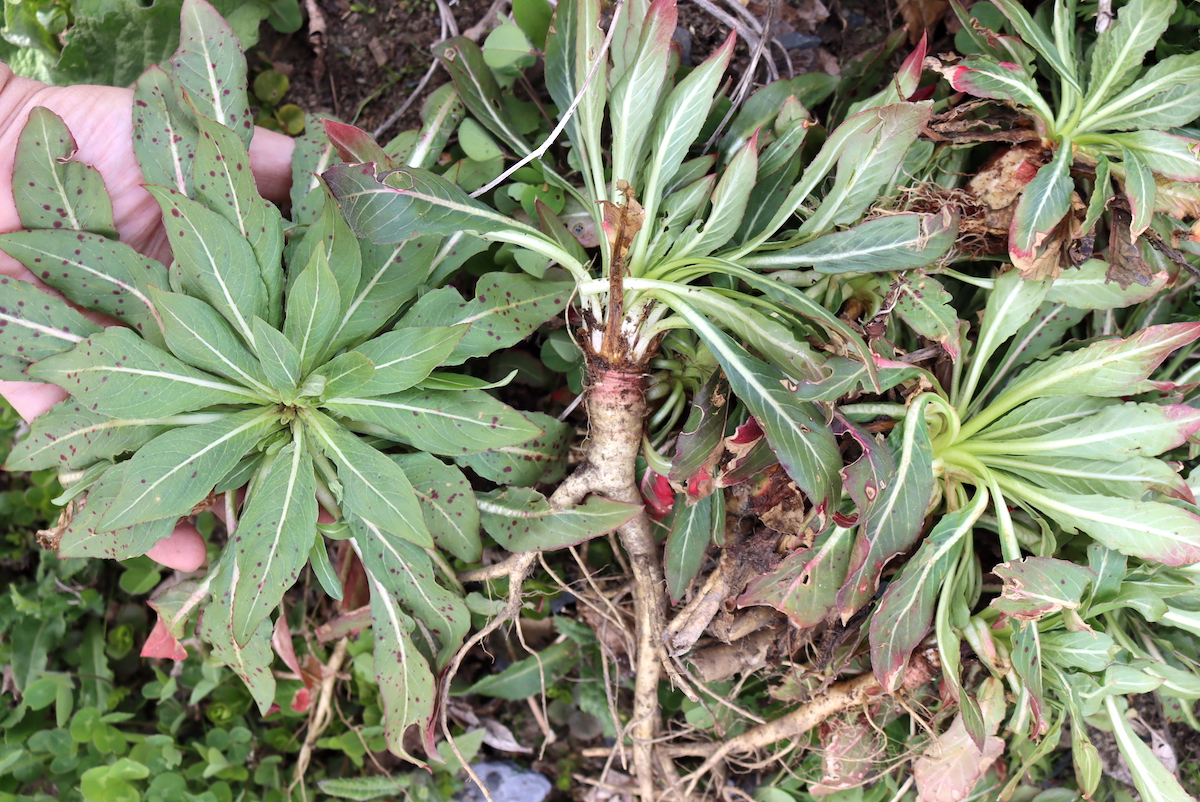
If you’d like to harvest leaves, select the leaves off the flower stalk of a plant in its second year of life. Leaves from the plant’s basal rosette are too tough and typically gritty to make a good meal.
The flower stalk that appears in the plant’s second year is also edible and is best to harvest in the early spring or summer. Cut the stalks and peel the outside for slightly spicy, crunchy vegetables.
You can also harvest flowers and flower buds from two-year-old plants. They can be surprisingly sweet and tasty.
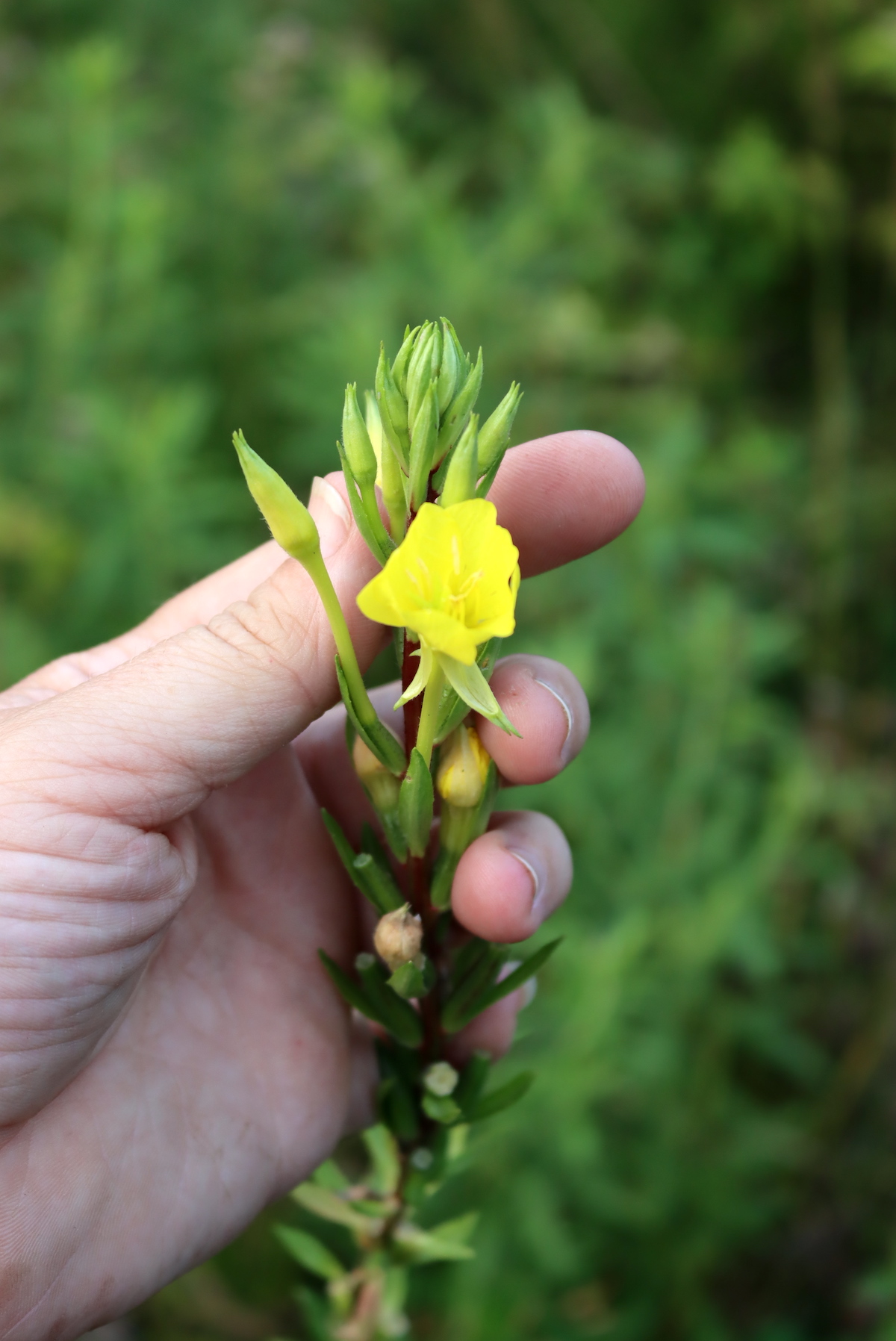
The seeds can also be harvested once the seedpods have dried and cracked open. It’s easiest to shake the seeds into a bag or bucket.
If you get other material knocked in, you can winnow it out in front of a box fan by pouring the seeds from one container to another. The light plant material will be blown away while the seeds drop into your container. The seeds are where the highly prized Evening Primrose oil comes from.
They can be eaten raw or cooked and have a slightly nutty flavor.
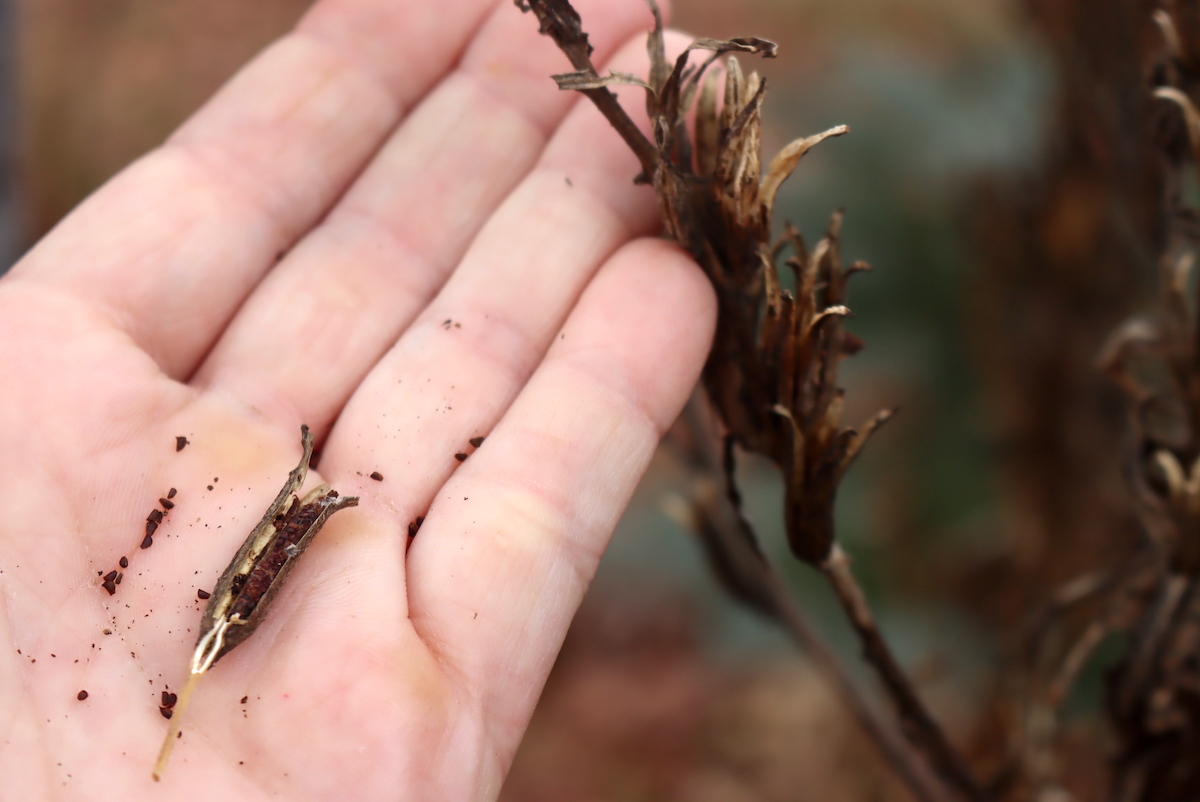
While Evening Primrose and Evening Primrose oil are widely used in herbal medicine and considered likely to be safe, you should use some caution.
Evening Primrose Oil may increase bleeding, so those with bleeding disorders or taking drugs with a similar effect may want to avoid it. The Mayo Clinic also recommends against using Evening Primrose oil if you have a seizure disorder, or mania, or are pregnant or breastfeeding.
How Does Evening Primrose Taste?
The flowers taste sweet and floral, without really much else. The greens too, are a fine wild green, good for cooking…and fine for eating in quantity.
Seeds inside the seed pods are a bit nutty, but otherwise plain. They’d make fine muffins if used instead of poppy seeds.
Evening primrose roots are where my interest lies, as they have the potential to be a really excellent early spring food source.
Sam Thayer says they’re spicy, and give a burning sensation at the back of the throat when eaten raw and suggests cooking with several water changes. But he also notes that they taste very different across their range and when grown in different conditions.
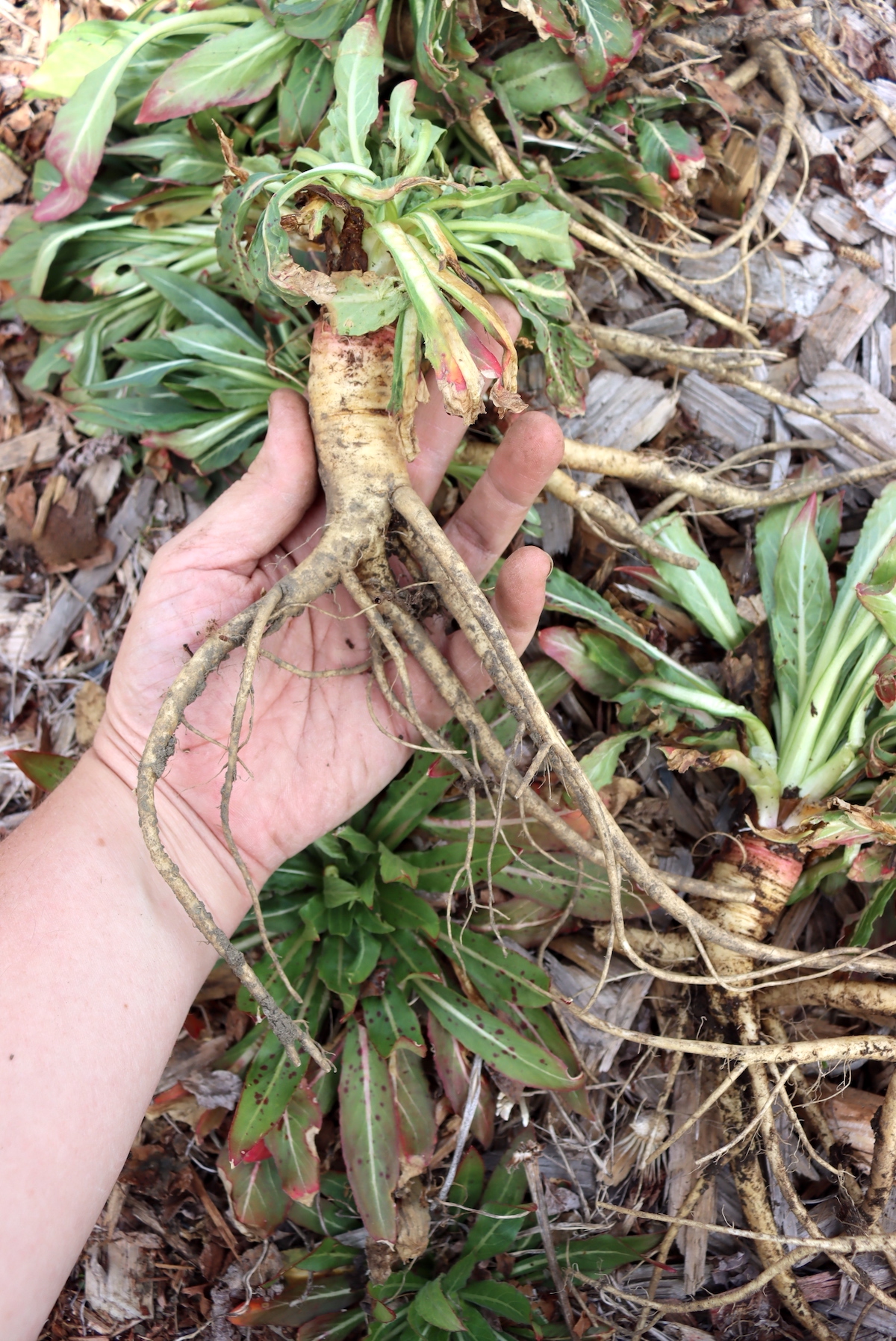
I harvested a good-sized handful of tap roots and peeled them before tasting them. I’ve noticed that peeling can completely transform wild roots, and peeled dandelion roots are very different from whole ones.
I found the peeled raw evening primrose root to be mild and sweet, king of like jicama, and not spicy at all but with a nice sweetness. Then I ate the peel…and it was incredibly spicy, and gave me a prickly/numbing sensation on my tongue. I don’t recommend eating the peel.
My skeptical husband just ate the peeled root and found it quite pleasant, also with no spice, just mild sweetness.
Next, I chopped the roots for cooking, and they oxidized to a fuscia pink as I cut them.
I boiled them for 10 minutes, changed the water, and then boiled them for ten more minutes.
The cooked evening primrose roots have a very slimy and mucilaginous texture, still sweet, but also a bit starchy…kind of like a slimy parsnip/potato. But much spicier now!
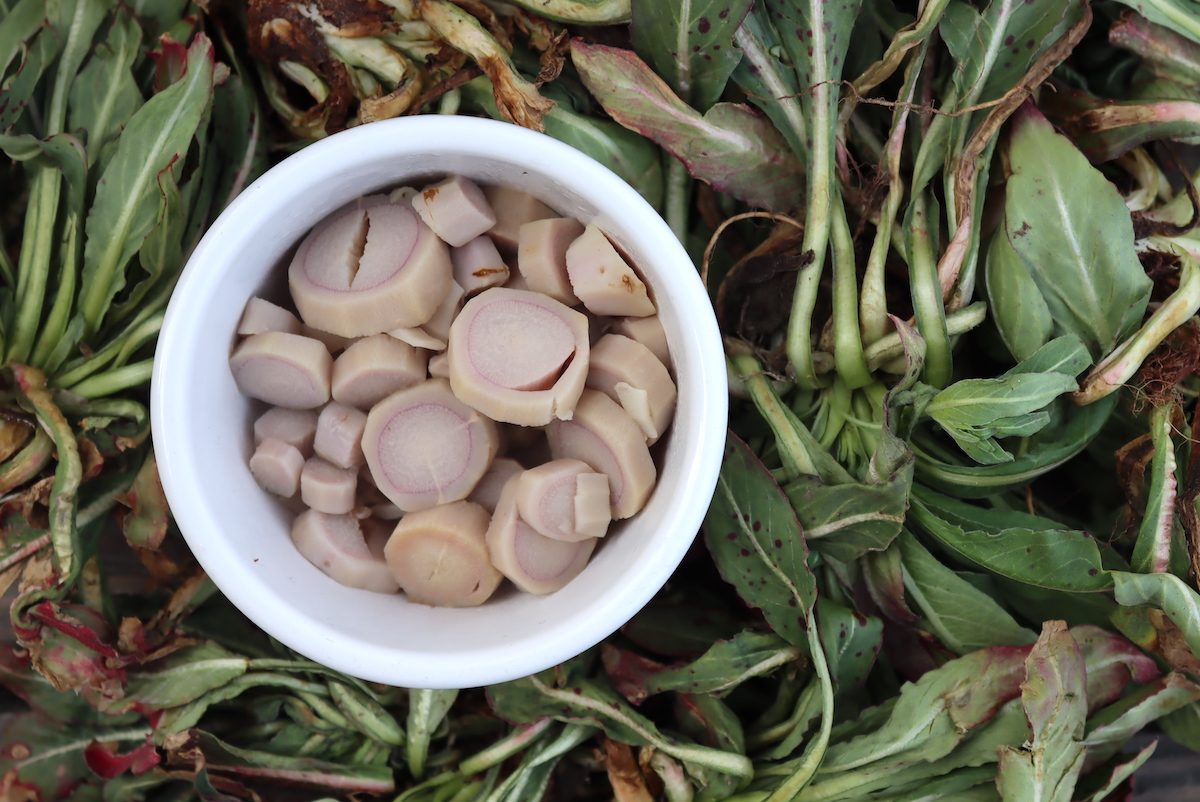
Once cooked, I can taste a bit of spice, but it’s not unpleasant. Testing it out on my skeptical husband, he says he’s not tasting any spiciness, only a very mild slimy texture, but says it tastes exactly like a parsnip and has no mouth spice/unpleasantness.
Since they’re so prolific and can be dug in the very early spring in March or April (two months before the first dandelion blossoms here in Vermont), they’re an excellent option for wild foraged calories during the “lean months” before things green up again.
Evening Primrose Medicinal Benefits
Many Native American groups used Evening Primrose medicinally, including the Anishinaabe, Cherokee, Iroquois, Ojibwas, and Potawatomi. Many groups used tea from the plant to improve energy levels and aid in weight loss. They also made a poultice from the plant to treat bruises, piles, and boils. They chewed the roots and rubbed them onto the muscles to improve strength. The plant was also sometimes used internally to treat bowel and menstrual pain.
In the 17th century, Evening Primrose was introduced to European botanical gardens as an ornamental. Evening Primrose oil became a popular folk remedy earning the plant one of its common names, King’s Cure-All.
Evening Primrose oil is still a common choice for modern herbalists. It’s thought to contain the highest amount of gamma-linolenic acid, an omega-6 fatty acid, of any known food substance.
Many herbalists use the oil internally to treat feminine issues, including menstrual pain, menopause symptoms, and PMS. A few studies, including this one from 2008, have found that Evening Primrose oil may help alleviate breast pain and tenderness.
Several modern studies have also evaluated Evening Primrose oil for treating atopic dermatitis. While some studies have had inconclusive results, many, including this one, where patients were treated for severe atopic dermatitis, found that Evening Primrose oil helped improve symptoms.
Where to Find Evening Primrose
Evening Primrose is native to North America and is easy to find in the eastern and central United States. It grows more sporadically in the western states. It has also naturalized in parts of Europe.
You’re most likely to find Evening Primrose growing in disturbed or open areas such as fallow fields, construction sites, lakeshores, woodland openings, river banks, meadows, gravel pits, dry, rocky plains, and the edges of cultivated areas.
Evening Primrose will tolerate any soil type but thrives in loose, well-drained soil and areas of sand and gravel. It thrives in full sun but will tolerate partial shade.
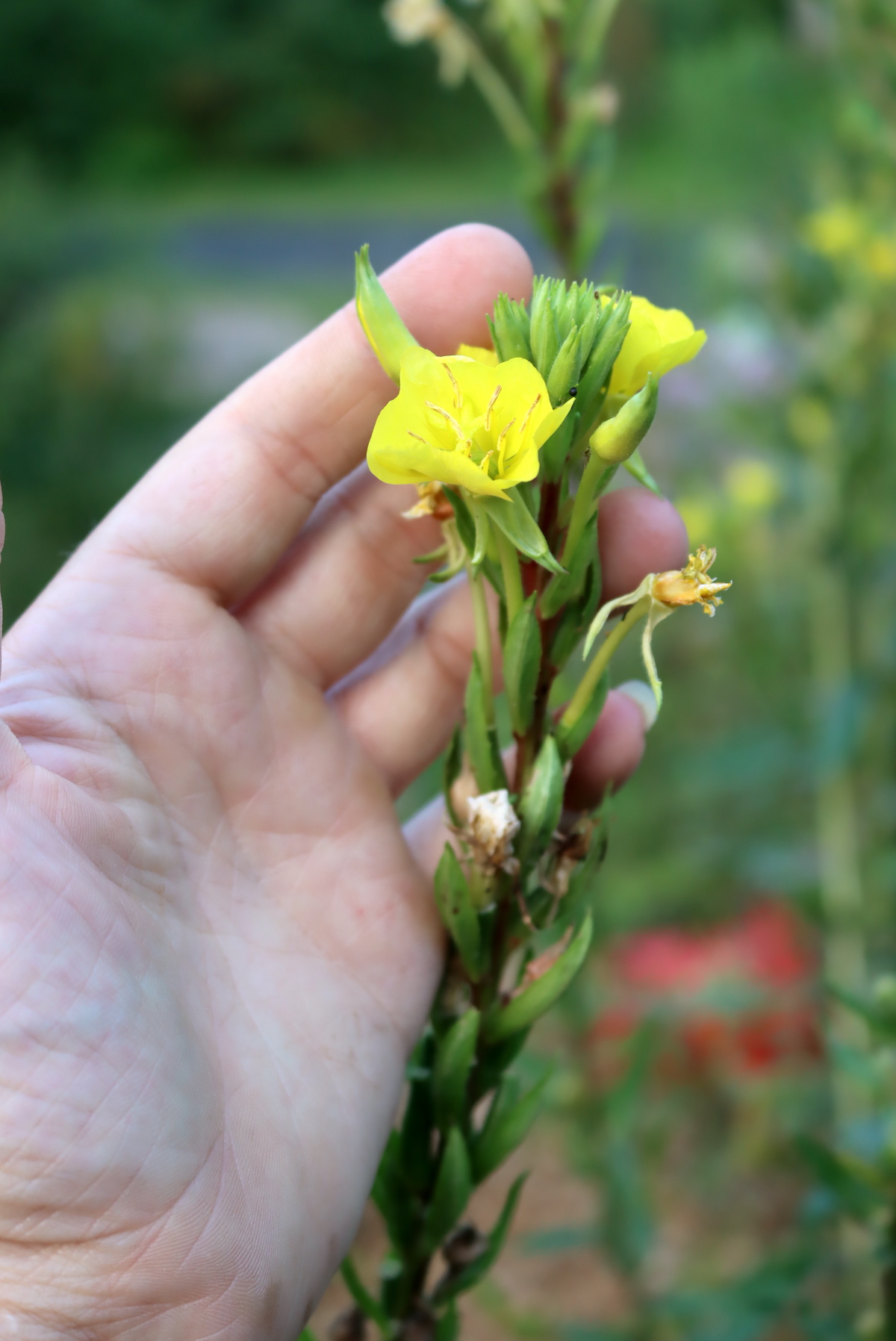
When to Find Evening Primrose
It’s a good idea to be on the lookout for Evening Primrose year round. The tall flower stalks of second-year plants will help you identify patches of Evening Primrose for the future, even if they’re dead and dry.
In their first year, the plants produce a basal rosette of leaves and a thick tap root in early spring. These taproots are good for harvesting in spring or summer. In the late fall, the basal rosettes of leaves will die back with heavy frosts.
The following spring, the plants will re-emerge with energy from their taproot. In late spring or early summer, flower stalks grow quickly from the basal rosette. The stalk and its leaves can be harvested during this time.
Evening Primrose begins to flower in late summer, and the flower buds and flowers can be harvested at this time. The flowers are followed by seedpods which will dry and crack open in the late summer or early fall, allowing you to harvest the seeds.
Identifying Evening Primrose
As a biennial, Evening Primrose looks different in different stages of life. In the first year, you may only find the basal rosettes. Thankfully, these plants tend to grow in patches, and you can usually find flower stalks from two-year-old plants or identify dead, dried stalks from the previous year.
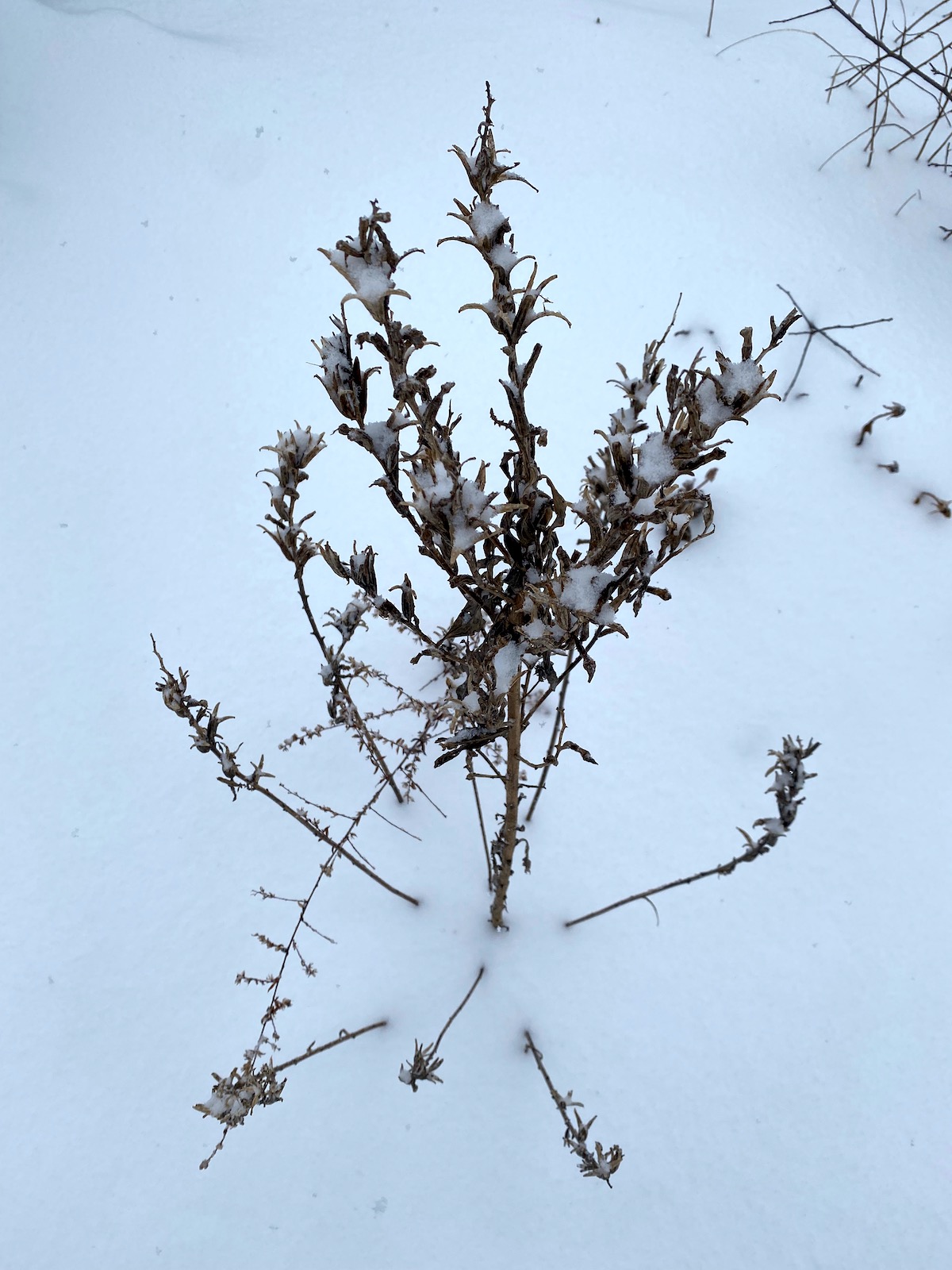
Evening Primrose Leaves
Evening Primrose leaves can be categorized into two types: those that form a basal rosette and those that grow on the flower stalk.
The leaves of the basal rosette are densely packed and lanceolate. They may grow up to 9 inches in length but are usually closer to 7, with the bottom layer having the longest leaves. The topmost leaves of the rosette are much smaller, only 1 to 2 inches long, and may be elliptic or ovate.
The leaves of the basal rosette may have scattered teeth of irregular size. They also all have a prominent light green or reddish midrib and dark green surface.
In its second year, Evening Primrose grows a flower stalk which is features lanceolate leaves about 3 to 6 inches in length. These leaves are arranged in an alternate pattern and are covered in fine white hair. The leaves on the upper stalk are sessile or directly attached to the stem, while the leaves on the lower stalk are petioled or attached to the main stem by a small stem.
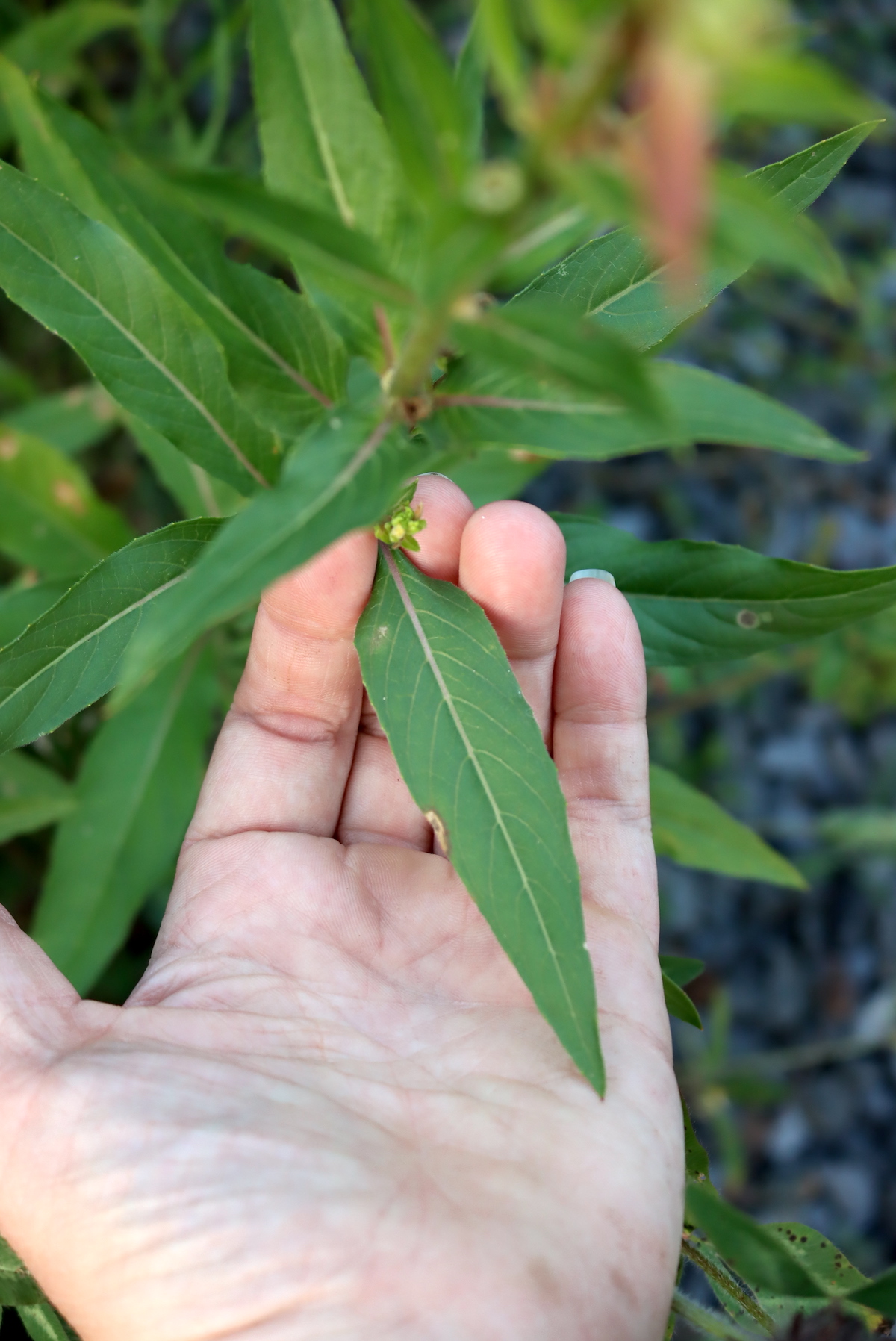
Evening Primrose Stems
Evening Primrose flower stalks or stems can grow quite tall, reaching 3 to 6 feet in height. At the base, they typically have a diameter of ½ to ¾ inches at maturity.
The stems are stiff, round, rarely branch, and are typically bumpy from leaf scars. They are usually green and tinged with purple.
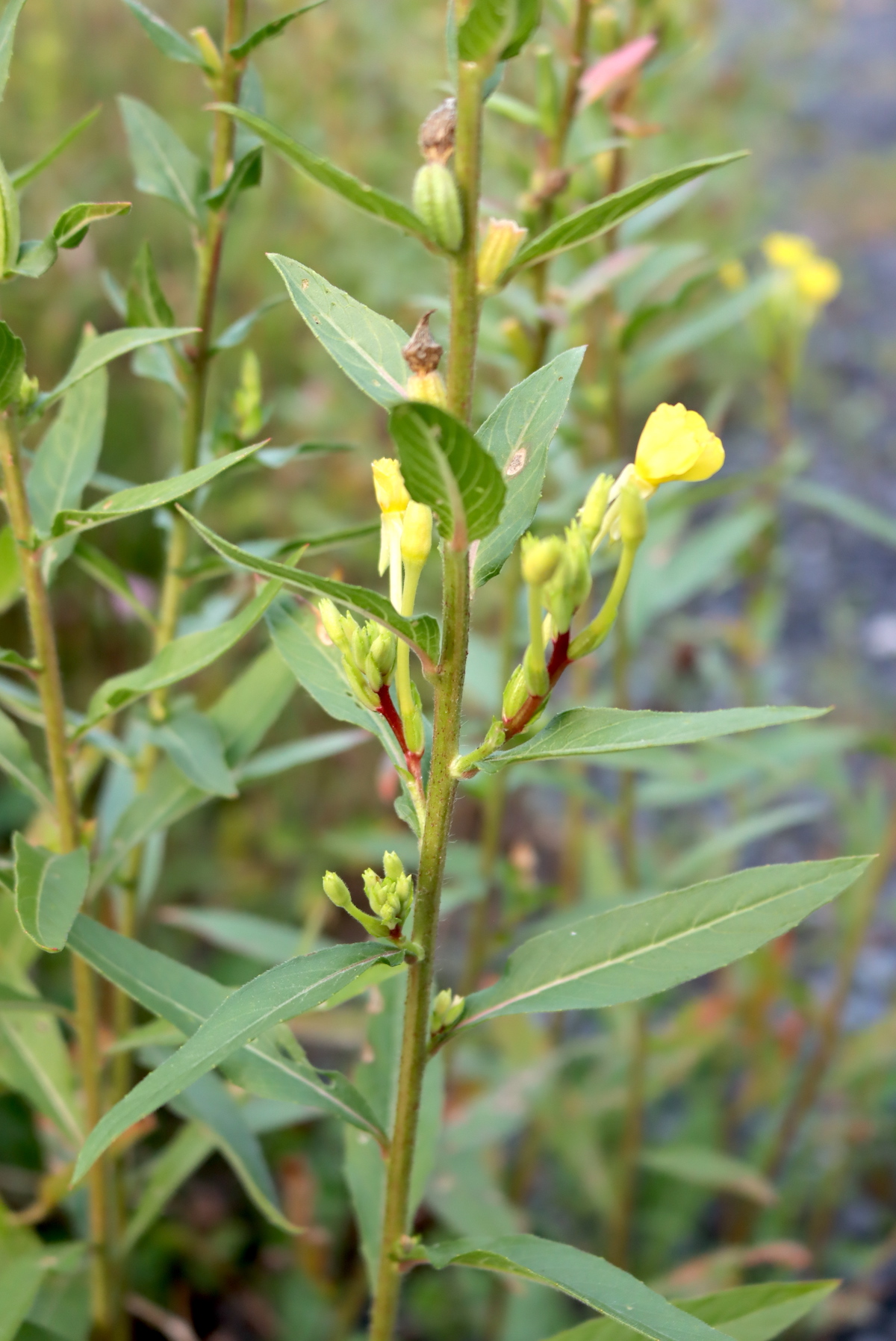
Evening Primrose Flowers
When the stem reaches its full height in late summer, flower buds and flowers form, encircling the top 1 to 2 feet of the stem. Starting near the base of this section, the plant begins to flower.
The blooms are formed from 4 bilobed petals which connect at the base to form a long, slender calyx tube. They’re typically yellow and 1 to 2 inches in diameter. The flowers open incredibly quickly in the evening and only last until the following day, around noon, when they close.
Invisible to humans, the flowers have a bright nectar guide pattern. Insects can see this pattern, and for humans, it is visible under ultraviolet light.

Evening Primrose Roots
Evening Primrose produces an edible taproot, not all that different looking from a parsnip or carrot. While they can get larger or be much smaller depending on conditions, the taproots are typically about 8 inches long, reach ¾ inches in diameter at the base, and taper to the end.
Often, larger rosettes will have large roots, but this isn’t always the case.
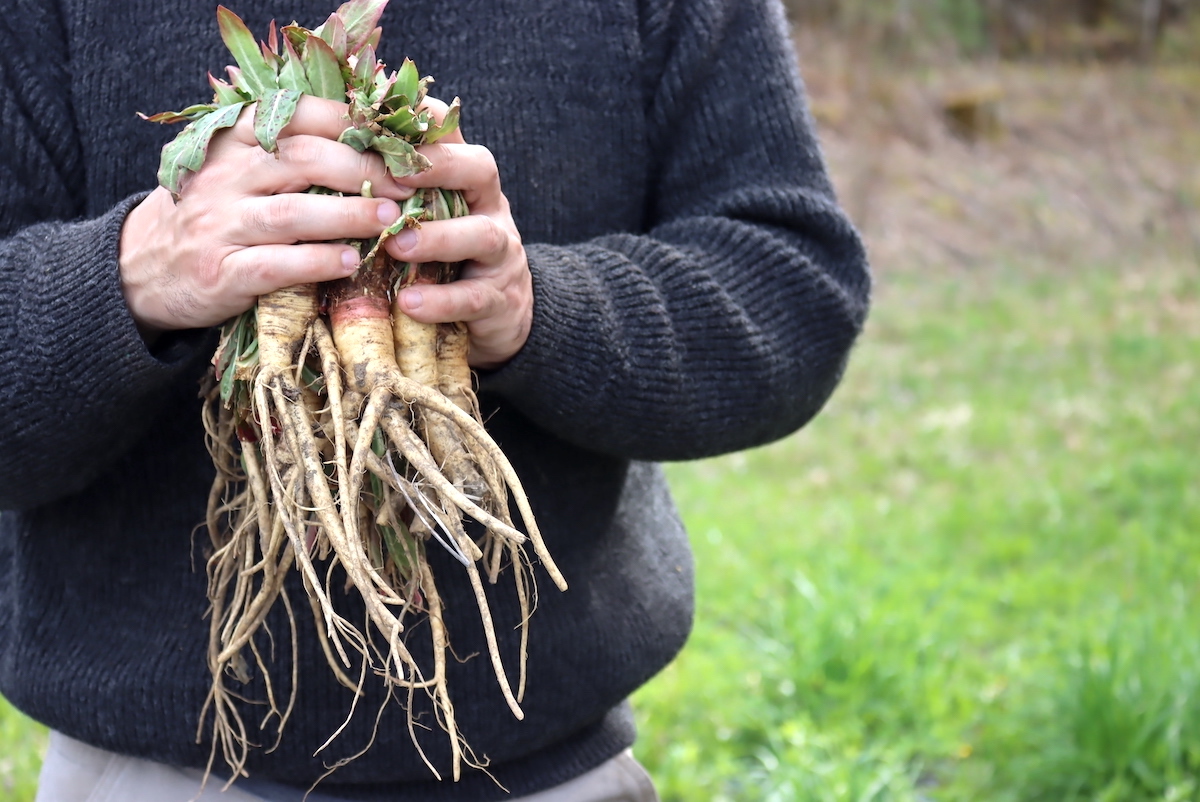
Evening Primrose Seeds
Seed pods follow the flowers. About 1.5 inches in length, they are narrow, woody, and tubular, curving upward and tapering to a blunt tip.
When the seed pod dries, it cracks open, exposing tiny, hard, reddish-brown, elongated seeds.
Note that you will often find plants with seed pods, flowers, and flower buds on the same stem. The flower pods will be above the flowers, while the seed pods will be below.
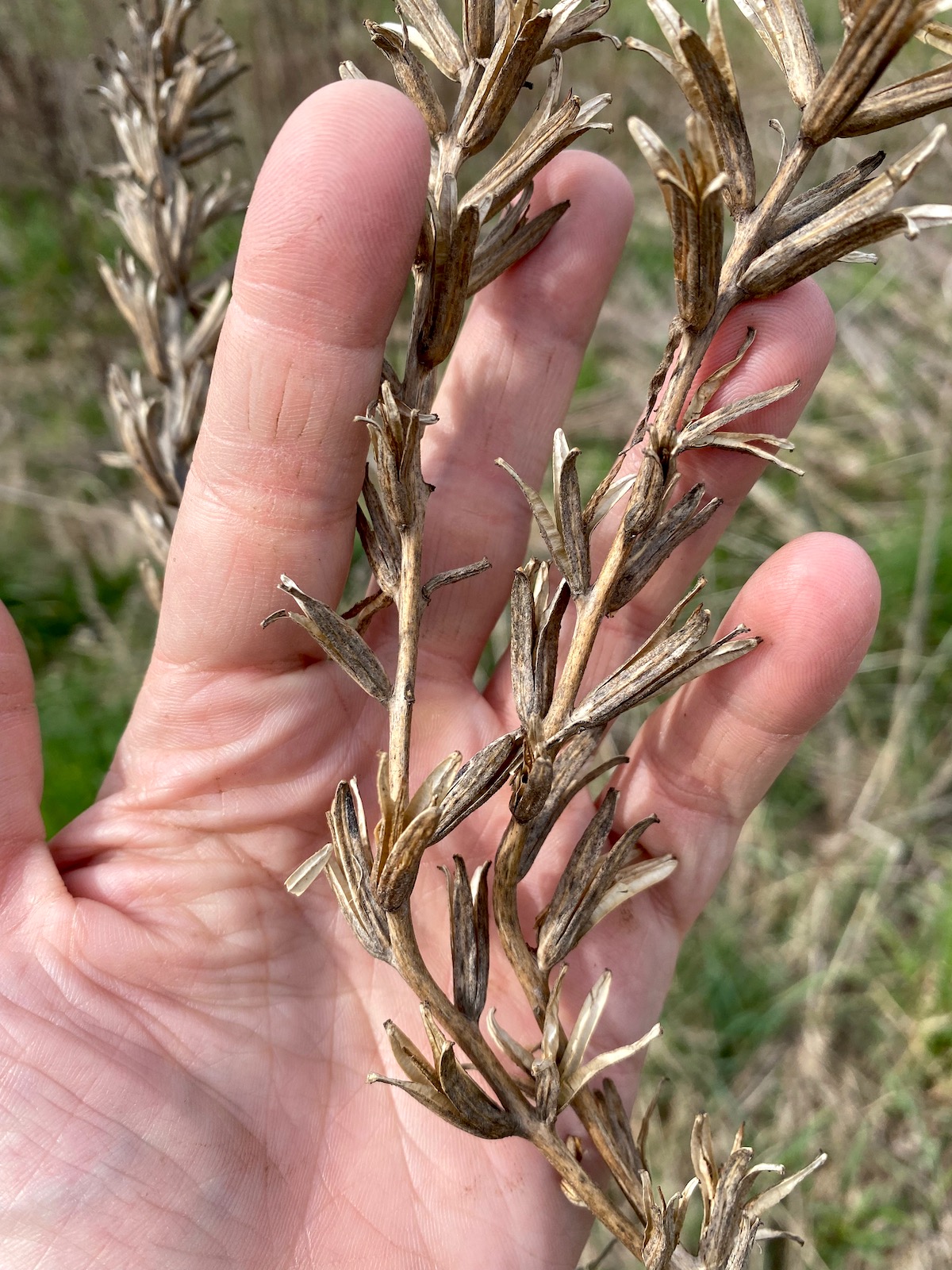
Evening Primrose Look-Alikes
Evening Primrose is sometimes mistaken for one of its relatives, Narrowleaf Evening Primrose (Oenothera fruticosa). It can be distinguished in the following ways:
- Narrowleaf Evening Primrose forms a cluster of stems rather than a single stem.
- Narrowleaf Evening Primrose typically only grows 1.5 to 3 feet tall.
- The leaves of Narrowleaf Evening Primrose are typically only 2 to 3 inches long.
I’ve also seen people confuse evening primrose with common mullein (Verbascum sp.), since they both have tall flower spikes with small yellow flowers. That’s where the similarity ends, and every other part of the plant is quite different.
Mullein has fuzzy leaves and a very different flower spike.
Ways to Use Evening Primrose
Evening Primrose is a fun plant for foragers because it provides something tasty and edible in every stage of its life. It’s also a highly sought-after medicinal.
The roots from first-year plants are slightly spicy and can be used similarly to other root vegetables like beets, carrots, or parsnips. Many people find them a bit too overpowering raw, but you can boil, fry, bake, or pickle them. Some folks recommend boiling them in several changes of water if they’re too intense.
The roots’ spiciness, flavor, and toughness vary with their environment.

In the plant’s second year of life, a flower stalk forms. The young, small leaves on this stalk are mildly spicy; you can eat them raw or cooked. You can also harvest the stem in spring and early summer when they’re still green and flexible. Cut the stalk and peel the outer layer for a sweet, slightly spicy, crunchy vegetable that can be used raw or cooked.
Once the stem reaches its full height, flower buds and flowers appear, which are both a tasty addition to salads or a pretty garnish. The buds can also be added to cooked dishes like soup. The flowers are much sweeter and less spicy than the rest of the plant, especially just after they have closed.
After flowering, Evening Primrose produces seed pods filled with edible seeds. Harvest the seeds once the pods have split open. They have a pleasant, slightly nutty flavor and can be added to granola, baked goods, stir-fries, and other recipes.
Medicinally, Evening Primrose oil is the most popular choice. The oil is pressed from the seeds, but you can also just eat the seeds. Making teas or tinctures from other parts of the plant is another popular choice, as is using the roots and other parts of the plant to make poultices and other external treatments.
Evening Primrose Recipes
- Whip up some tasty Evening Primrose roots with these simple recipes for Roasted Winter Vegetables, Evening Primrose Fritters, and Evening Primrose Patties from Sacred Earth.
- If you find an abundance of Evening Primrose, you can preserve your harvest with this recipe for Pickled Evening Primrose Roots from Milk and Honey Herbs.
- Want to add Evening Primrose to your herbal medicine cabinet? Try one of these Herbal Evening Primrose Tea recipes from The Enchanter’s Green.
- If you purchase or press your own Evening Primrose oil, you can also use it in these primrose oil beauty recipes from A Natural Perspective.
Edible Wild Weeds
Looking for other edible wild weeds?
Foraging Guides
Looking for more edible wild plants to forage?
- Foraging Wild Black Cherry (Prunus serotina)
- Foraging Black Walnuts (Juglans nigra)
- Foraging Fireweed (Rosebay Willowherb)
- Foraging Marsh Marigold (Caltha palustris)
- Foraging Partridgeberry (Mitchella repens)
- Foraging Fiddlehead Ferns
- Foraging Ramps (Wild Leeks)
- Foraging Wild Asparagus
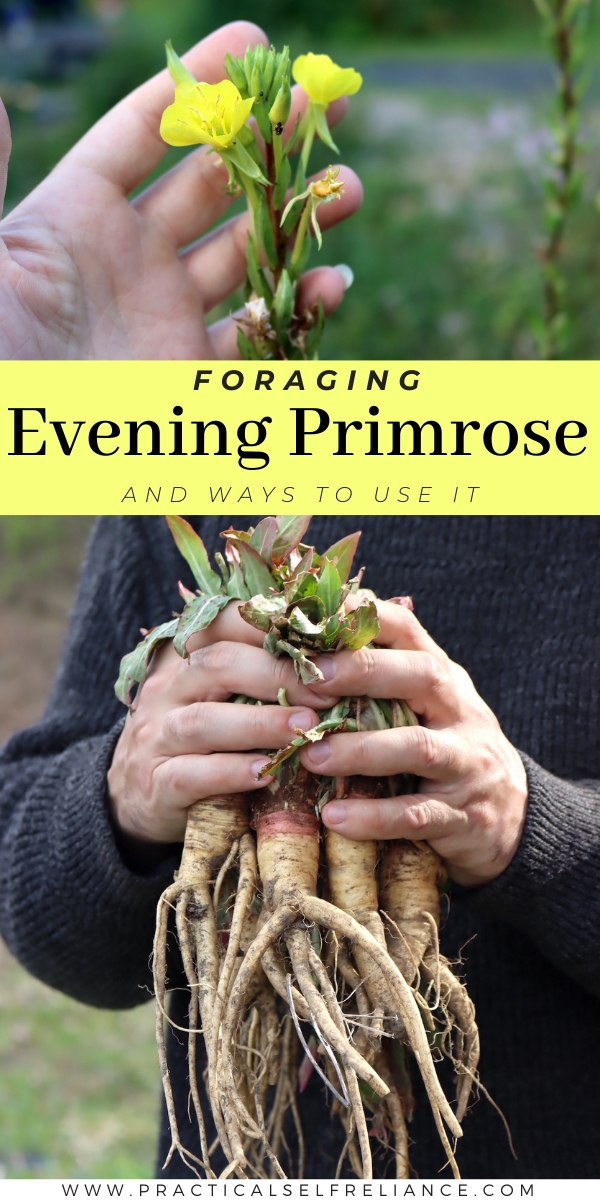
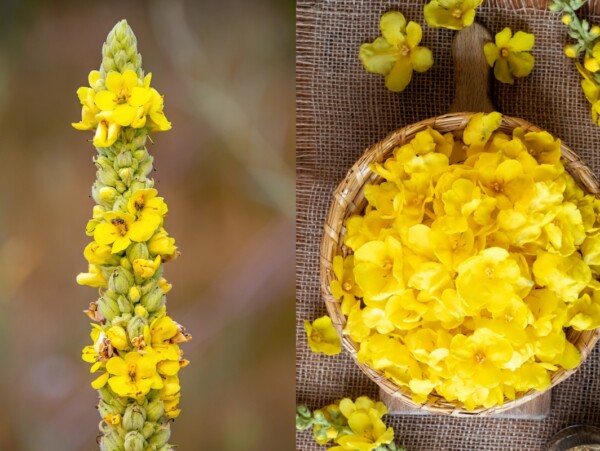
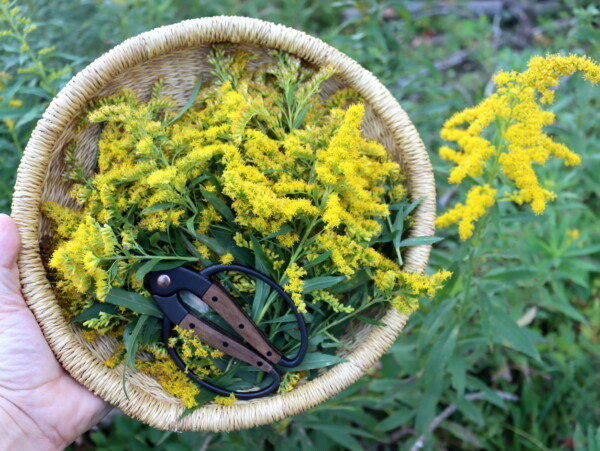
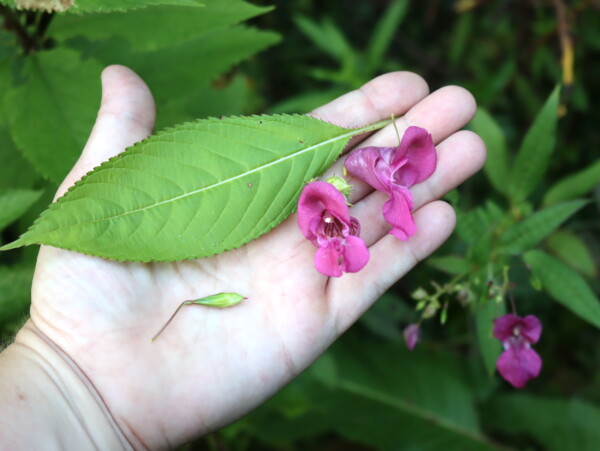
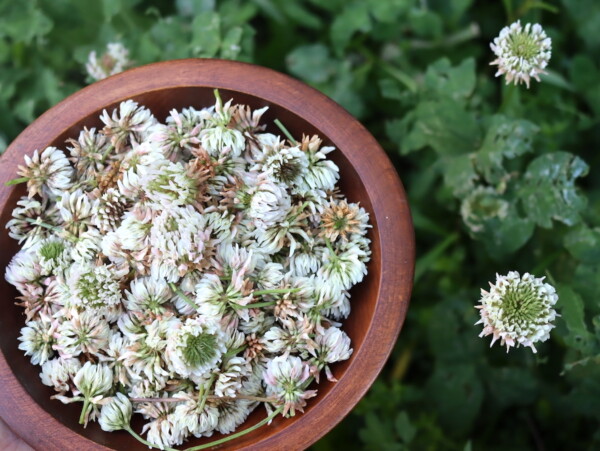
I grew one from seed last year and now have lots because I planted more seeds from that plant. I’ll be looking forward to trying the roots and all the other uses. Thank you for sharing
That’s wonderful! You’re very welcome. We’re so glad you enjoyed the post.